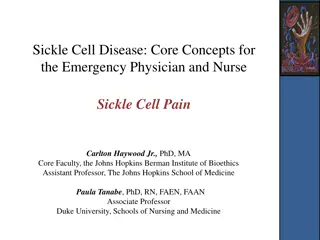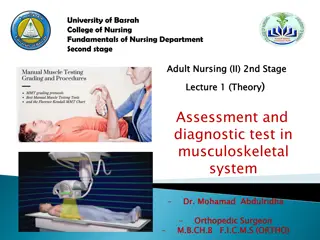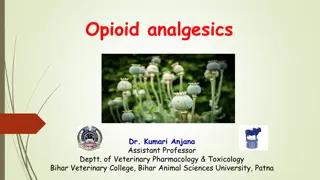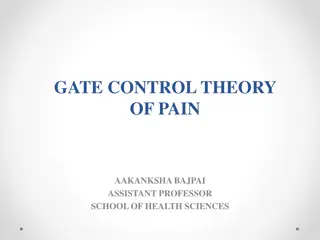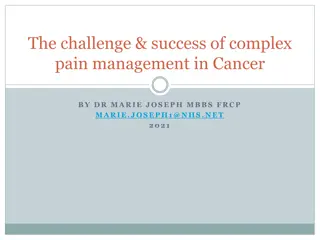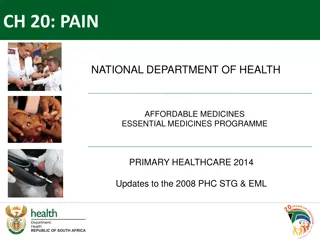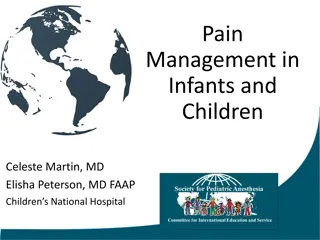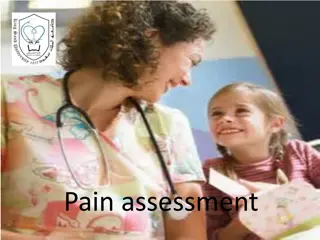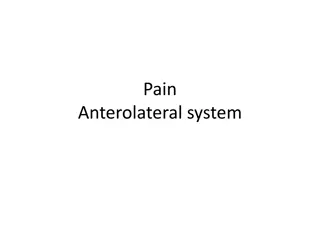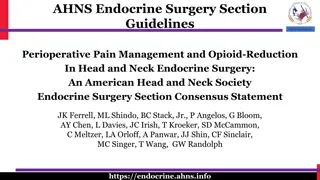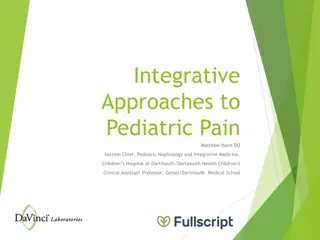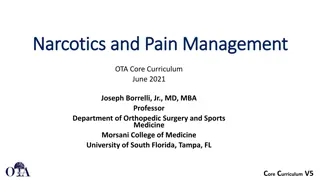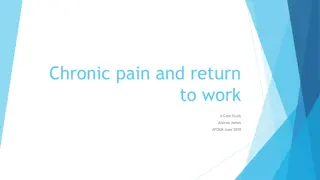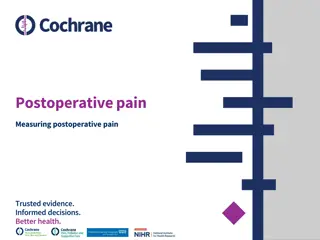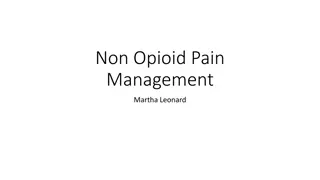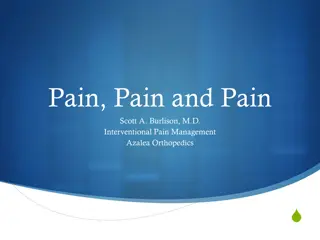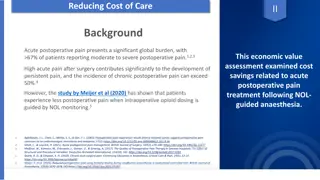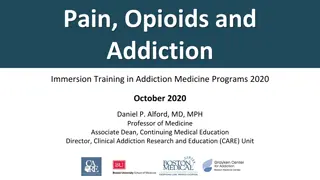Pain Management Strategies and Techniques
Pain is a complex response to protect the body from damage, influenced by various factors including psychological and social aspects. Understanding pain and adopting active strategies can help manage chronic pain effectively. This includes focusing on activities, psychological skills, and self-management techniques to reduce the overprotective nature of the pain system over time.
Download Presentation

Please find below an Image/Link to download the presentation.
The content on the website is provided AS IS for your information and personal use only. It may not be sold, licensed, or shared on other websites without obtaining consent from the author.If you encounter any issues during the download, it is possible that the publisher has removed the file from their server.
You are allowed to download the files provided on this website for personal or commercial use, subject to the condition that they are used lawfully. All files are the property of their respective owners.
The content on the website is provided AS IS for your information and personal use only. It may not be sold, licensed, or shared on other websites without obtaining consent from the author.
E N D
Presentation Transcript
Understanding Pain Mito Connect Call September 2023 Mito Foundation and PainAustralia
MITO CONNECT CALL AGENDA Introduction Michele Hemmings, Pathways Telehealth Nurse, Mito Foundation In collaboration with Giulia Jones, CEO PainAustralia Kristen McCallum, Support Services Officer, Mito Foundation 11:00am 11:05am Pain and mito Michele Hemmings 11:25am What is Pain? Kristen McCallum on behalf of Giulia Jones, PainAustralia 11:40am Question Time 12:00pm Close
OBJECTIVES To help improve your understanding of pain, causes and triggers of pain To provide a feeling of hope that there is support available when you are living and dealing with pain To help empower you to be able to use tools to enable your health team to adopt pain management treatments and strategies
INTRODUCTION Pain is a condition that is present in a lot of chronic diseases and mito is no exception There are many recognised pain management techniques and strategies that can help a pain sufferer continue to participate in life Understanding your pain will help to develop helpful management strategies 1 in 5 Australians are living with Chronic pain Chronic Pain | Pain Management Network (nsw.gov.au)
What is Pain Pain is an unpleasant feeling, causing a reaction to protect the part of the body that is painful. Pain is one way our body s protective systems keep us safe. When tissue is damaged, danger detectors become much more sensitive. Psychological and social factors, as well as past experiences, can powerfully influence pain by complex mechanisms in the brain. Persistent or chronic pain (long-lasting pain that goes on for more than three months, or past normal tissue healing time) will usually involve the pain system becoming overprotective.
What is Pain Many factors affect pain There are many things you can do to change pain. Recognising that pain is more than a physical sensation, but is influenced by sleep, exercise, your general health, attitudes, belief, mood, your environment and the people around you, means that all these things can provide new and better ways for you to change your pain, moment to moment and over time. Over time, the pain system can learn to become less protective again The best strategies to achieve this are activity based, psychological skills and self management strategies. Active strategies include learning about pain, gradually increasing your activity and movement, working on thoughts, emotions and coping skills. Anyone concerned about pain that has lasted beyond the expected time for healing should consult their doctor or refer to our Pain Services Directory to find a service. www.painaustralia.org.au/find-support/getting-the-right-care-1/pain-directory
Pain in Mito There are 5 recognised pain areas in mito Neuropathic or nerve pain Description: The associated pain may be deep, burning and aching or sudden, sharp, and stabbing. It also may result in paraesthesia that cause tingling, prickling or numbness. Abdominal Headache and Migraine Description: Migraine can be with or without an aura. There is no comprehensive overview currently available. Description: There may be symptoms of vomiting, nausea, dysmotility and Abdominal migraine. Possible causes: GORD (gastrointestinal Reflux ), constipation gastroparesis obstructions. Generalised non-localised pain Description: Has been reported as aching all over heaviness and tightness in limbs painful to move or stretch. Dull internal aches and organic pain radiating into other areas of the body. Muscle Pain Description: Tense aching knotted sharp and relentless. Possible causes: Patients mainly complain of diffuse exercise-related muscle pain, but focal/multifocal and at rest myalgia were often also reported.
Pain Management Plans This conversation should be started with your GP and/or specialist where the health professional can work alongside you to help you find suitable treatments to better manage your pain. Managing your pain may involve various treatments at various times. Understanding your pain, your level of pain and your triggers will help you use treatments more successfully. Beginning with understanding pain and how it is linked with the way we think is an important first step. With regular reviews and accessing the services of other health professionals you may feel empowered to have better control over your pain.
10 Alternate Pain Management Techniques These techniques may be considered when developing a pain management plan 1. Exercise and stretching A combination of resistance training and cardio training is recommended for the management of mito 2. Massage Therapy With mito light pressure may be more therapeutic and relaxing. Always choose a licensed therapist. 3. Nutritional changes Research continues to suggest that nutritional interventions and changes can have a significant impact on pain reduction 4. Yoga Can help chronic pain by decreasing pain perception 5. Meditation Is like brain training. Anyone can do it -- anytime, anywhere.
10 Alternate Pain Management Techniques 6. Tens Machine (Transcutaneous Electrical Nerve Stimulation) 7. Cognitive Behavioural Therapy (CBT) Focuses on addressing the way pain affects thinking, feeling and behaving. 3. Dry Needling Insertion of needled into muscle trigger points 4. Medication There are two general groups of medications for chronic pain non-opiates and opiates. Cannabis based products: evidence is limited regarding mito and the use of canniboids 5. Heat Packs Heat therapy is relaxing and a mild pain reliever. It may take the edge off several kinds of pain, mostly duller and persistent pains associated with stiffness, cramping, and neuropathic sensitivity.



